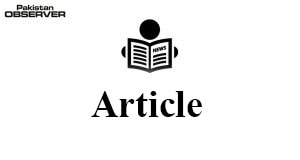Covid-19: Future of out-of-school children
THERE are 22.8 million children out of school in Pakistan”.
We have been repeatedly hearing this statement on the dismal Pakistani education statistics for the better half of the last decade.
With the addition of the unprecedented and difficult situation created by Covid-19, it is speculated that another one million children are at risk of dropping out-of-schools by the end of the pandemic.
While the situation is alarming for Pakistani children as a whole, it creates an even bigger risk for girls whose access to education was many times less than that of boys even before the pandemic.
Pakistan is currently going through the third wave of Covid-19 and simultaneously schools in most parts of the country have seen a third phase of closures in the past one year.
While there’s no denying that school closures were imperative to curtail the spread of the deadly contagion, one must also take a moment to reflect on the deep, adverse impact that they’ve had on students’ access to education and learning at all educational levels.
Needless to say, children hailing from unprivileged background have remained most affected during this period of uncertainty. For many girls, even in urban Pakistan, the challenge has been far greater as social and cultural barriers restrict their access to smart devices and the internet.
These challenges are very tangible and are posing a very real threat in terms of rolling-back an entire decade’s worth of gains made vis-à-vis access to education in Pakistan.
And so, the question here is that should the Covid-19 pandemic only be treated as a health emergency and the collateral damage it has caused to sectors such as education not be accounted for?
The answer is an obvious, “No.” While the health sector will and should be the biggest recipient of government support – both financial and otherwise – until the emergency subsides, the response effort must, under no circumstance, put our children’s constitutional right to free and quality education on the back burner.
More than ever before, Pakistan’s feeble education system needs a new lease of life that would allow it to mitigate colossal learning losses incurred during the pandemic and protect past gains on one hand and on the other pilot and mainstream hybrid learning solutions that would make it disaster resilient going forward.
For any of this to materialize, education in Pakistan needs enhanced investment. One would consider this reminder especially important in the light of a recent white paper, “Public Investment in Education: COVID-19 & Other Past Emergencies” which sufficiently establishes that Pakistan’s education development expenditure is routinely shown the axe both during emergency and non-emergency times.
—The writer is a development practitioner, currently working with Pakistan Youth Change Advocates (PYCA) to ensure universal secondary education in the country.










